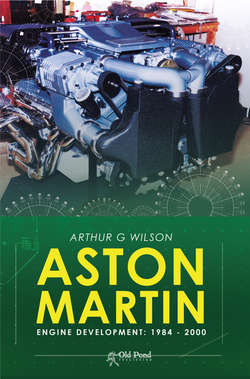Читать книгу Aston Martin Engine Development: 1984-2000 - Arthur Wilson L. - Страница 15
На сайте Литреса книга снята с продажи.
AML Engineering Department, 1984
ОглавлениеWhen it came, the AML/AMT separation was a painful experience for both companies but probably more so for AML, as not only had we lost the benefit of having a significant engineering resource but also we were now worse off than before. The Tickford side of things had evolved out of the AML experimental department and had absorbed all of those resources, which – as it was now to become a stand-alone company – effectively left AML without engineers or an engineering department.
At the time I was still working on engines as a development engineer within the Tickford division of AML. Along with a few others I was offered a position within the new AML engineering department, which meant that I had to make the very difficult decision to stay with AML or with Tickford. I had been with AML since the very early part of 1959, and had a strong loyalty for the cars and the company. On the other hand, I had been in at the beginning of the Tickford venture, which had provided me with a much wider engineering experience; also I had a lot of very good friends there, not to mention a great deal of respect for the directors and engineers that I worked with – as I said earlier, they were all top guys in their respective fields. But eventually a few of us were persuaded to jump to the AML side of the line to form the nucleus of a new but much smaller engineering department, with Michael Bowler as director of engineering.
The new AML engineering department had to hit the road running with – from my point of view – a major engine project in progress; a project that I had completed most of the base engine development as part of AMT, but for which I would now be the project liaison engineer for AML. At the same time there was an oil consumption problem beginning to show itself and some customers were concerned about the amount of oil that their engines were using. Oil consumption is a major problem to sort out and, as I had just started, it was decided that this would be best returned to our piston manufacturer to sort out for us. Apart from building test engines for them, this released me to tackle the next major upgrade to the Vantage engine derivative for the Zagato Coupe with a 300 kph target speed. And then the big one, the creation of the new 32-valve engine for a completely new car, the Virage. It was this last project that again brought home the reality of the costs involved in producing a completely new model to conform to the new, more stringent, European emission regulations, costs that would take an awfully long time to recover at a production rate of one or two cars per week, if ever. The twin supercharged Vantage that followed was an even bigger project and the costs were rising accordingly. So the opportunity offered by the Ford Motor Co. must have looked very attractive to Mr Gauntlet when it came.
